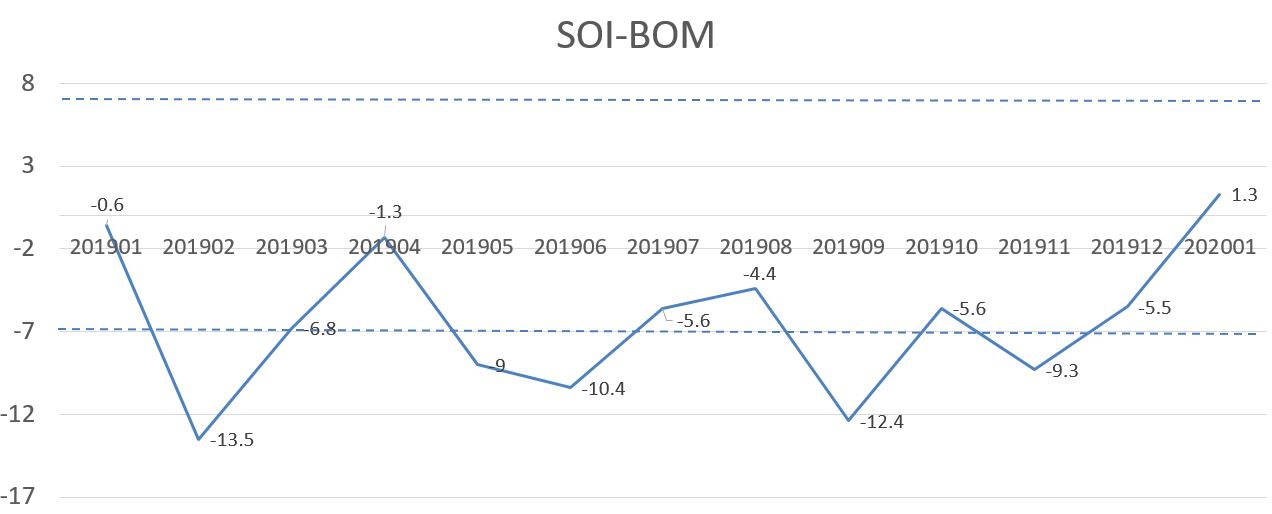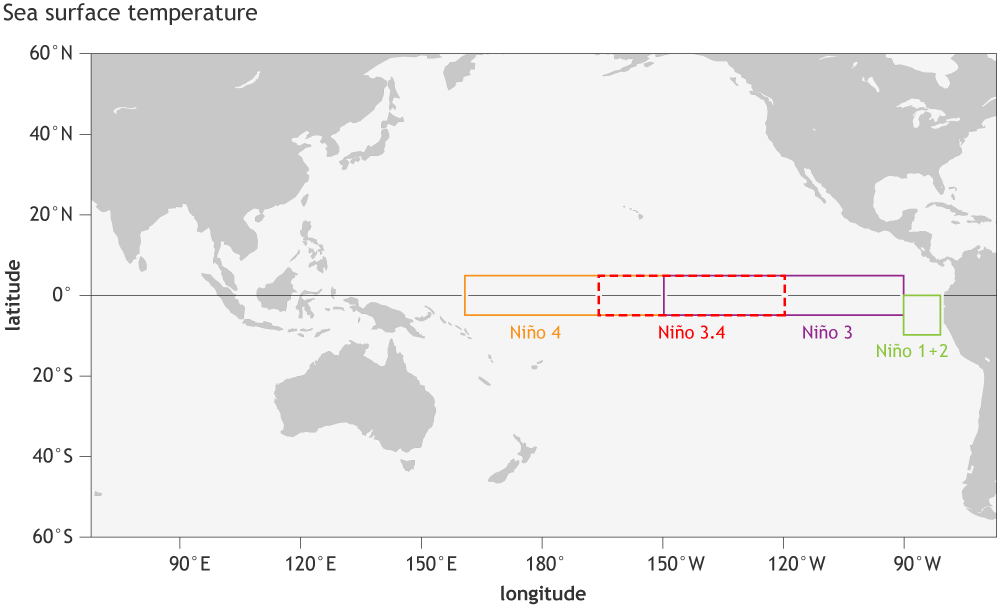Neutral El Nino condition prevails across the Pacific Ocean continuously. Figure 5.5 illustrates the behavior of the standard Southern Oscillation Index (SOI) of the Australian Bureau of Meteorology (BOM) from January 2019 to January 2020 [1]. Sustained positive values of the SOI above +7 typically indicate La Niña while sustained negative values below −7 typically indicate El Niño. Values between about +7 and −7 generally indicate neutral conditions. During this monitoring period, SOI decreased from -5.6 in October to -9.3 in November, then increased gradually to -5.5 in December, further to +1.3 in January, 2020, indicating a neutral El Nino situation. The sea surface temperature anomalies in January 2020 for NINO3, NINO3.4, and NINO4 regions were +0.3°C, +0.5°C, and +0.9°C, respectively, somewhat warmer than the 1961-1990 average according to BOM (see Figure 5.6-5.7) [2-3]. Both BOM and NOAA conjecture that the warmer condition indicates a neutral El Niño [4]. CropWatch will keep monitoring the situation.
Figure 5.5. Monthly SOI-BOM time series from January 2019 to January 2020 [1]

Figure 5.6. Map of NINO Region [2]

Figure 5.7. January 2020 sea surface temperature departure from the 1961-1990 average [3]

Main Sources:
[1] http://www.bom.gov.au/climate/current/soi2.shtml
[2] https://www.climate.gov/sites/default/files/Fig3_ENSOindices_SST_large.png
[3] http://www.bom.gov.au/climate/enso/wrap-up/archive/20200204.ssta_pacific_monthly.png?popup
